Silicon skyscraper: MAKE’s Atlas Building to be highest in London’s Tech City
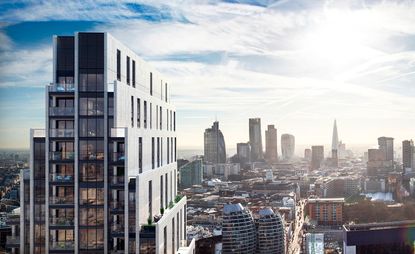
Due to complete at the end of 2018, MAKE Architects’ The Atlas Building will combine living with working and entertainment. Just five minutes walk from Old Street station, the design will also contribute to the regeneration of the area, incorporating a pedestrian thoroughfare to run between City road and East road.
At 152m high the building will be the tallest in the area, a flagpole for the future of London’s Silicon roundabout, which has seen astronomical architectural change and economic growth over the past two decades.
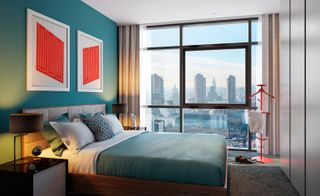
The residences on offer include studios, one to three bedroom apartments and penthouses.
It is certainly a sleek addition to the skyline, almost discreet in its neat stack of 12 concrete-framed sheaths clad in anodised aluminium, which shoot upwards in a staggered formation. While currently it stands alone, looking across to The City in the south, it won’t be long before it welcomes neighbours.
The 40 storeys of The Atlas Building will house 302 apartments including studios, one to three bedroom apartments and penthouses; the latter will each have a balcony or terrace with double aspect outlook across London. Built for a convenient modern existence, design and delivery has been undertaken by Woods Bagot and Scott Brownrigg. The building's amenities include a gym, spa and swimming pool as well as a screening room, lounge and a children’s play area – residents of the Atlas may never leave.
Ten storeys of offices will accompany the Atlas in a separate building, designed as a lower, more solid blade a stone's throw from the skyscraper. This allowed MAKE to join the two structures with a public piazza, dedicating 35 per cent of the site footprint to a new, open public space by the vibrant Shoreditch area.
MAKE anticipates the future of residential life in Tech City with this self-sufficient building, which was conceived not just for sleeping, but for working, relaxing, socialising and everything in between – the Atlas is your oyster.
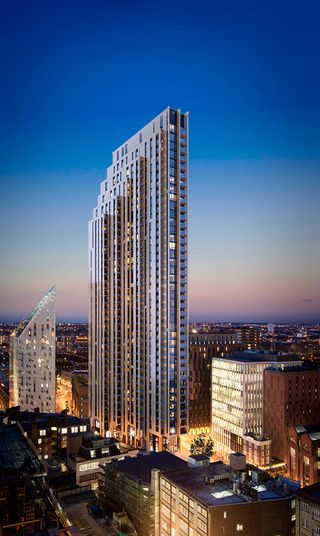
Twelve sheaths clad in anodised aluminium shoot up in a neatly staggered design, which opens up space for terraces for the upper apartments

The interiors were designed by Woods Bagot. The architects used practical, high quality materials and finishes.

Kitchens are fully fitted with Siemens appliances and robust materials, such as composite stone worktops and ceramic tiles.

The swimming pool is just one of the many amenities available to The Atlas Building's residents
INFORMATION
For more information, visit the MAKE Architects website
Wallpaper* Newsletter
Receive our daily digest of inspiration, escapism and design stories from around the world direct to your inbox
Harriet Thorpe is a writer, journalist and editor covering architecture, design and culture, with particular interest in sustainability, 20th-century architecture and community. After studying History of Art at the School of Oriental and African Studies (SOAS) and Journalism at City University in London, she developed her interest in architecture working at Wallpaper* magazine and today contributes to Wallpaper*, The World of Interiors and Icon magazine, amongst other titles. She is author of The Sustainable City (2022, Hoxton Mini Press), a book about sustainable architecture in London, and the Modern Cambridge Map (2023, Blue Crow Media), a map of 20th-century architecture in Cambridge, the city where she grew up.
-
 Utilitarian men’s fashion that will elevate your everyday
Utilitarian men’s fashion that will elevate your everydayFrom Prada to Margaret Howell, utilitarian and workwear-inspired men’s fashion gets an upgrade for S/S 2024
By Jack Moss Published
-
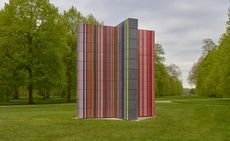 Gerhard Richter unveils new sculpture at Serpentine South
Gerhard Richter unveils new sculpture at Serpentine SouthGerhard Richter revisits themes of pattern and repetition in ‘Strip-Tower’ at London’s Serpentine South
By Hannah Silver Published
-
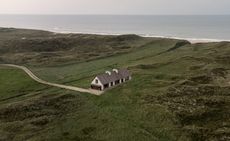 Vipp’s Scandinavian guesthouse offers a sleek setting amid a wild landscape
Vipp’s Scandinavian guesthouse offers a sleek setting amid a wild landscapeVipp Cold Hawaii is a Scandinavian guesthouse designed by architecture studio Hahn Lavsen in Denmark’s Thy National Park
By Sofia de la Cruz Published
-
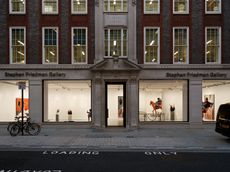 Stephen Friedman Gallery by David Kohn is infused with subtly playful elegance
Stephen Friedman Gallery by David Kohn is infused with subtly playful eleganceStephen Friedman Gallery gets a new home by David Kohn in London, filled with elegant details and colourful accents
By Ellie Stathaki Published
-
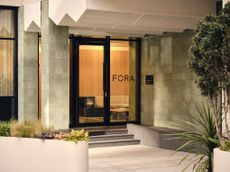 Henry Wood House’s postmodernist bones are refreshed by Nice Projects in London
Henry Wood House’s postmodernist bones are refreshed by Nice Projects in LondonNice Projects breathes new life into the Henry Wood House in London, offering ample flexible office spaces for modern workers
By Daven Wu Published
-
 ‘Bio-spaces’ exhibition at Roca London Gallery celebrates biophilic design
‘Bio-spaces’ exhibition at Roca London Gallery celebrates biophilic design‘Bio-Spaces: regenerative, resilient futures’ opens at the Roca London Gallery as ‘a call to action to stop designing nature out’
By Clare Dowdy Published
-
 Don’t Move, Improve 2024: London’s bold, bright and boutique home renovations
Don’t Move, Improve 2024: London’s bold, bright and boutique home renovationsDon’t Move, Improve 2024 reveals its shortlist, with 16 home designs competing for the top spot, to be announced in May
By Ellie Stathaki Published
-
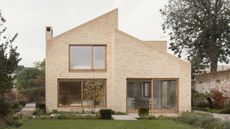 Timber-framed Wimbledon house is a minimalist, low-energy affair
Timber-framed Wimbledon house is a minimalist, low-energy affairA new timber-framed Wimbledon house is designed to blend into its traditional surroundings with a neat brick façade, careful massing and pared back interiors
By Jonathan Bell Published
-
 London Science Museum’s Energy Revolution gallery champions sustainable exhibition design
London Science Museum’s Energy Revolution gallery champions sustainable exhibition designThe Energy Revolution gallery opens at London’s Science Museum, exploring decarbonisation through sustainable exhibition design by Unknown Works
By Ellie Stathaki Published
-
 This South Downs house stands as a testament to the value of quiet refinement
This South Downs house stands as a testament to the value of quiet refinementAt one with the landscape, a South Downs house uses elements of quintessential country villas and midcentury gems with modern technologies
By Jonathan Bell Published
-
 Ash Tree House offers a contextual approach to a north London site
Ash Tree House offers a contextual approach to a north London siteAsh Tree House by Edgley Design is a modern family home in a north London conservation area's backyard site
By Ellie Stathaki Published